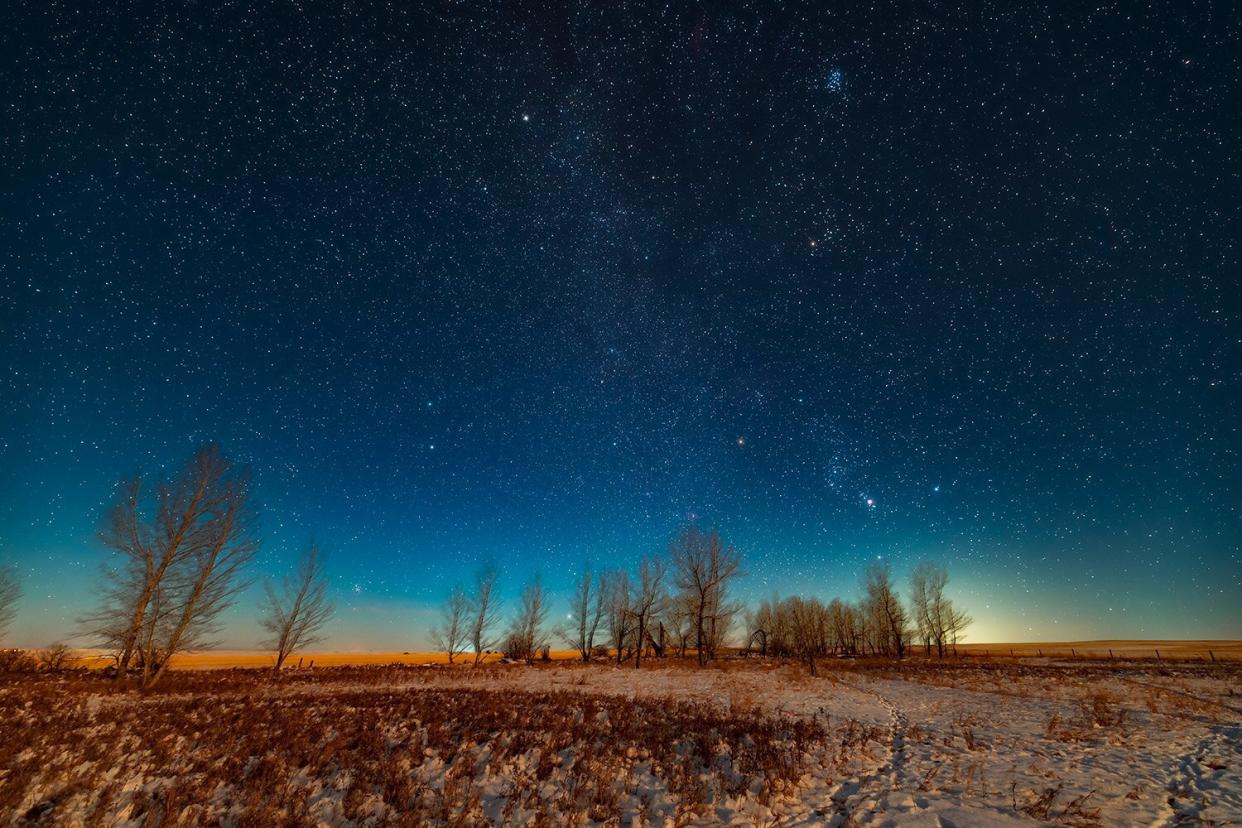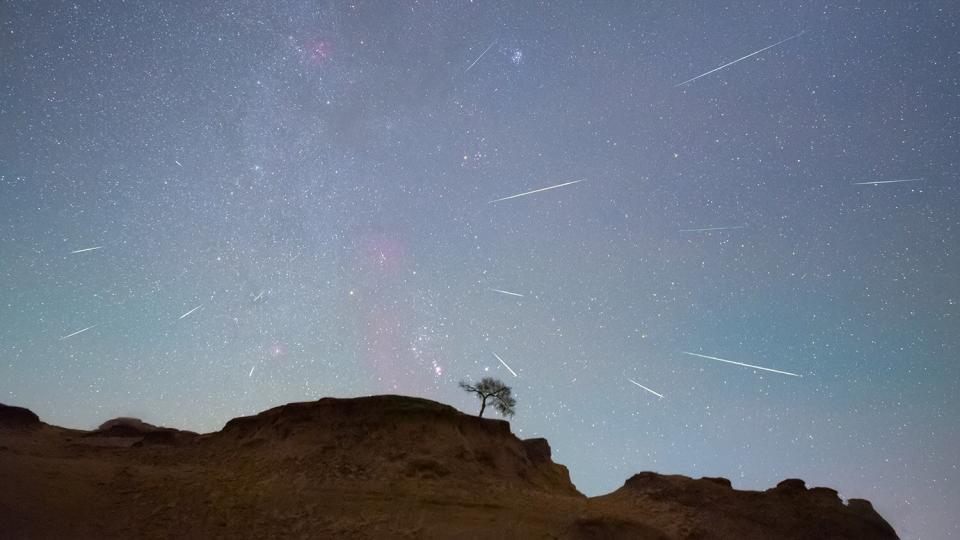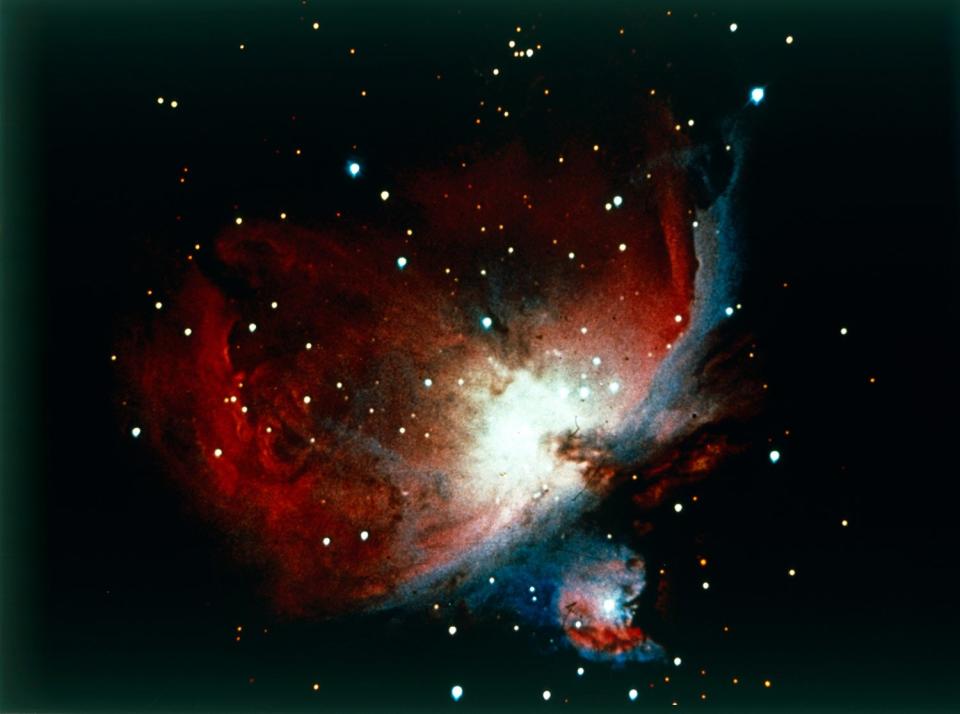Everything to Know About the Orionid Meteor Shower, Including When It Peaks and How to Watch

getty
Get ready to sit back, relax and enjoy the star-studded show!
Meteor shower lovers are in for a treat because the Orionids are upon us — which according to NASA, are "the most beautiful showers of the year."
Be sure to keep your blinking to a minumm when trying to catch a glimpse of the Orionids because they are known for their super speed, shooting approximately 148,000 mph into Earth's atmosphere.
Better yet, they often leave trains as a result of their extreme velocity — so look out for the beautiful trails of stardust in their wake that can last from several seconds to a minute. But that's not all! Due to the speed of the stars, fireballs are also very possible as well.
The celestial event takes place annually and occurs when Earth passes through a stream of debris that trails behind Halley's Comet, the parent comet of the Orionid shower. Though Halley's Comet takes about 76 years to orbit the sun, the Earth annually passes through the ice and dust it sheds, which becomes the Orionids in October.
Between when they peak and how to watch them, here's everything to know about the Orionid meteor shower.
RELATED: Everything to Know About October's Hunter's Moon, the First Full Moon of Fall
When does the Orionid meteor shower peak?

getty
The Orionids are expected to peak on Oct. 21, 2022, around 2:00 a.m. local time. You may also be able to spot a meteor during the mornings of Oct. 17, Oct. 18 and Oct. 19, but there's a good chance your view might be hindered.
Fortunately, the moon will be just a mere sliver on the day that the Orionids peak due to its waning crescent phase allowing for epic star-sighting conditions. Unfortunately, the moon will be brighter between midnight and dawn at the beginning of the week, so your meteor shower view might be slightly obscured.
Although the shower peaks on Oct. 21, the Orionids are active for nearly three months! The Orionids began on Sept. 26 and last until Nov. 22, so you'll have multiple opportunities to spot a shooting star (and make a wish, of course!)
RELATED: Everything to Know About the Full Moons in 2022
How to view the Orionid meteor shower?
For the best views, a dark sky is preferred. If there's little light pollution and the moon isn't casting an extra bright glow, 10 to 20 meteors are expected to shoot per hour. Better yet, these super speedy stars occasionally leave persistent trains (and sometimes even produce fireballs)!
Where does the Orionid meteor shower appear in the sky?

Heritage Space/Heritage Images/Getty
While comets are the true point of origin for meteor showers, many tend to think they come from their radiant, or the point in the sky the stars appear to shoot. For the Orionids, its radiant is the constellation Orion the Hunter located on the celestial equator — therefore, the stars are visible in both the Northern and Southern Hemispheres.
Despite the Orionids whizzing around the easy-to-spot constellation, you can catch a glimpse of this meteor shower anywhere in the sky. So situate yourself outside, lay down on the ground and look up for a spectacular, starry scene!
RELATED: Breathtaking Photos of July's Buck Moon Captured From Around the World
What meteor shower comes after the Orionids?
After the Orionids is the Leonid meteor shower, which is expected to peak during the night of Nov. 16 into Nov. 17 early morning.

 Yahoo News
Yahoo News 
